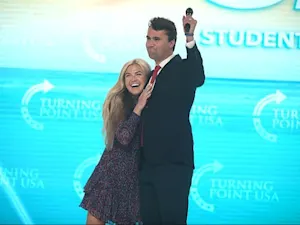
You Can Sue for Reverse Discrimination — And Win
United States Supreme Court on June 6, 2021. Photo by Kurt Kaiser under CC0 1.0.
The moment the U.S. Supreme Court handed down its unanimous decision in "Ames v. Ohio," legal watchers immediately took notice. At the heart of the ruling was a deceptively simple question — should people from majority groups have to work harder to prove they've been discriminated against?
For Marlean Ames, a white, heterosexual woman from Ohio, the answer had been yes. Until now.
A Career Setback Sparks a Legal Fight
In 2019, Ames applied for a promotion at the Ohio Department of Youth Services, where she had worked since 2004. Instead of moving up, she was passed over in favor of a lesbian colleague and later demoted. A gay man filled her old position. Ames believed her sexual orientation was the reason and filed a lawsuit in 2020.
But the federal trial court and then the Sixth Circuit Court of Appeals threw out her case. Why? Because Ames was part of a majority group. Under what's known as the "background circumstances" rule, according to Mother Jones, she had to show additional evidence, such as a pattern of anti-majority bias or a specific minority decision-maker, to even have her case heard.
A Legal Reset From the Top
The U.S. Supreme Court unanimously rejected that rule in a decision issued June 5, 2025. Writing for the court, Justice Ketanji Brown Jackson said federal civil rights law prohibits discrimination based on identity — period. Courts cannot create extra burdens for plaintiffs simply because they're part of a majority group.
"Congress left no room for courts to impose special requirements on majority-group plaintiffs alone," Jackson wrote, according to the Associated Press.
The ruling affects lawsuits in 20 states and Washington, D.C., where the background circumstances test had blocked many claims from white, male, or heterosexual plaintiffs.
The Case Isn't Over — But the Rules Have Changed
So what now? The court didn't decide whether Ames was actually discriminated against. Instead, it "vacated and remanded" the case — legal speak for sending it back to the lower court to be reconsidered under this new, fairer standard.
Ames's lawyer, University of Virginia law professor Xiao Wang, said that was the goal all along — to give her a fair shot in court. "What we were asking from the justices was really just to let her have her day in court. We removed the legal obstacle blocking her case from proceeding, but the next big step after that is usually to present your factual story to a jury," he said, according to Mother Jones.
Justice Clarence Thomas, joined by Justice Neil Gorsuch, concurred in the decision but went further, calling the current three-step test for employment discrimination outdated and potentially due for elimination in a future case.
Is This a Blow to DEI?
Though DEI — Diversity, Equity, and Inclusion — wasn't mentioned in the ruling, some observers have interpreted the decision as a warning shot against DEI-based hiring policies. Conservative groups praised the ruling as a way to hold organizations accountable for "reverse discrimination" against white, male, or straight workers.
But Wang pushed back on that idea. "I think a lot of us want diverse workplaces and diverse educational institutions, and for these places to reflect all different types of people and all different types of views," he said, according to Mother Jones, adding that the ruling doesn't eliminate DEI.
Instead, Wang insists that the ruling just ensures that all individuals are judged equally under the law. He also warned that interest groups may misinterpret or misuse the ruling for political gain. "That's different than what the law actually says, and how it actually gets applied in courts," Wang told Mother Jones.
What This Means for Workers — and the Courts
For everyday Americans, this case reinforces something fundamental — everyone has the right to be treated fairly at work. Whether you're a member of a historically marginalized group or part of a majority, the rules should be the same. And after this ruling, they finally are.
Ames's lawsuit is moving forward. What happens next will depend on whether a jury believes her version of events. But no matter the outcome, the legal system she faces will treat her like any other plaintiff — and that, according to the justices, is exactly how it should be.
References: What SCOTUS Actually Said About Workplace Fairness in This Year's Big "Reverse Discrimination" Case | Supreme Court Ruling Makes It Easier to File Reverse Discrimination Lawsuits | Supreme Court Rules for Straight Woman Who Claims She Was Subjected to Reverse Discrimination | Supreme Court Makes It Easier to Claim 'Reverse Discrimination' in Employment, in a Case from Ohio























